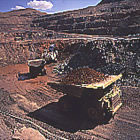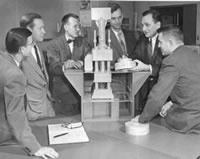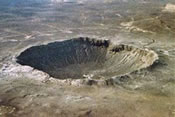 Thousands of tons of rock are displaced each day in mines scattered around the world in hopes of uncovering a few gem-quality diamonds. But how would we feel if this miracle of nature could be copied, atom by atom, in a laboratory in just a few hours? Could any man make diamond, no matter how faithful, ever compare with a natural stone?
Thousands of tons of rock are displaced each day in mines scattered around the world in hopes of uncovering a few gem-quality diamonds. But how would we feel if this miracle of nature could be copied, atom by atom, in a laboratory in just a few hours? Could any man make diamond, no matter how faithful, ever compare with a natural stone?
Diamonds have always invited fakery, which was often easy to spot. And while the techniques for producing look-a-likes have improved, these diamond simulants are still no closer to being diamonds than a piece of glass. Real man made diamonds are much more difficult to make and nearly impossible to break. Their chemical composition was only discovered in the late 1700s, after pioneering chemist Antoine Lavoisier found a way to burn one. In this lab a real diamond is being heated to over 1500 degrees centigrade. After being dropped into liquid oxygen, the diamond burns completely. All that is left is carbon dioxide gas thus proving that diamonds are nothing but pure carbon. The only pure carbon substance known in Lavoisier’s time was graphite, the soft, black material in pencil lead.
Man Made Diamonds: Graphite to Diamonds
Could slippery, soft graphite be transformed into diamond – the hardest and most brilliant material on earth? For those who first dreamed of making diamonds, it must have seemed an insurmountable task. It was war that created the urgent need for man made diamonds. During the Second World War, diamond-tipped cutting tools were desperately needed to make weapons. Only diamonds were hard enough to cut and shape the tools required for making airplane parts, vehicle armor and other military hardware. At the time, American industry was dangerously dependent on South African diamonds. Fearing the loss of this critical supply, the American government was determined to develop an alternative source. But it would be another decade before one was found. In 1951 General Electric started project Superpressure. Its aim was to make the world’s first industrial man made diamonds with the same properties as natural diamonds.
 The first challenge was to find a way of transforming graphite into diamond. The team soon learned that graphite, despite its softness, is amazingly resistant to change. The GE team first looked to nature when considering how to turn graphite into diamond. Because diamonds are found inside extinct volcanoes, embedded in a mineral called kimberlite, geologists believed they were formed in the molten ooze of the earth’s mantle – more than 100 miles below the surface. Here, temperatures range between 2000 and 3000 degrees Fahrenheit. Pressures rise above one million pounds per square inch. Only in an environment of extreme heat and pressure, geologists realized, do carbon atoms coalesce into the highly compact crystalline form of diamond.
The first challenge was to find a way of transforming graphite into diamond. The team soon learned that graphite, despite its softness, is amazingly resistant to change. The GE team first looked to nature when considering how to turn graphite into diamond. Because diamonds are found inside extinct volcanoes, embedded in a mineral called kimberlite, geologists believed they were formed in the molten ooze of the earth’s mantle – more than 100 miles below the surface. Here, temperatures range between 2000 and 3000 degrees Fahrenheit. Pressures rise above one million pounds per square inch. Only in an environment of extreme heat and pressure, geologists realized, do carbon atoms coalesce into the highly compact crystalline form of diamond.
By dating the minerals trapped inside diamonds, scientists learned that they were formed between 600 million and three billion years ago. But how long did it take nature to make a diamond? Did diamonds form slowly over millions of years? Or did they coalesce quickly – perhaps during their explosive race to the surface inside volcanic plumes of molten kimberlite? To find out, scientists would have to replicate the heat and pressure found within the earth’s mantle. Only then might they be able to break down the atoms of graphite and see whether they would re-form as diamond. But the GE team had little idea what the right combination of temperature and pressure should be for man made diamonds.
 GE spent millions on diamond presses capable of focusing huge pressures and temperatures on the graphite capsule, but still the graphite wouldn’t turn to diamond. After four years – and many broken presses – Project Superpressure was in trouble. The team had to find a way to make diamonds at lower temperatures and pressures or the project would be cancelled. But before they could make man made diamonds, the scientists had to figure out how to break down the atomic structure of graphite. They had one clue. Because diamonds are crystals – like ice – perhaps they, too, might be grown from a liquid.
GE spent millions on diamond presses capable of focusing huge pressures and temperatures on the graphite capsule, but still the graphite wouldn’t turn to diamond. After four years – and many broken presses – Project Superpressure was in trouble. The team had to find a way to make diamonds at lower temperatures and pressures or the project would be cancelled. But before they could make man made diamonds, the scientists had to figure out how to break down the atomic structure of graphite. They had one clue. Because diamonds are crystals – like ice – perhaps they, too, might be grown from a liquid.
Man Made Diamonds: Answer from the Sky
 One of the GE scientists read that some tiny diamonds had been found in a crater located in Arizona. In the 1950s geologists discovered that a meteorite made this crater. Within it they found tiny diamonds that had been formed on impact. There was another clue in that meteorite – something they thought must have helped to form the diamonds. The diamonds were surrounded by metal. It was the evidence the GE scientists were looking for. They hoped that a metal called troilite, when heated into a liquid, would act as a solvent to break the bonds between the carbon atoms in graphite – and do it at a pressure and temperature that was lower than the levels they had been using. They tried adding some troilite to the growth capsule. They hoped that the carbon atoms in the graphite would dissolve into the molten troilite, and then when they had reached a high enough temperature and pressure, would crystallize as man made diamond.
One of the GE scientists read that some tiny diamonds had been found in a crater located in Arizona. In the 1950s geologists discovered that a meteorite made this crater. Within it they found tiny diamonds that had been formed on impact. There was another clue in that meteorite – something they thought must have helped to form the diamonds. The diamonds were surrounded by metal. It was the evidence the GE scientists were looking for. They hoped that a metal called troilite, when heated into a liquid, would act as a solvent to break the bonds between the carbon atoms in graphite – and do it at a pressure and temperature that was lower than the levels they had been using. They tried adding some troilite to the growth capsule. They hoped that the carbon atoms in the graphite would dissolve into the molten troilite, and then when they had reached a high enough temperature and pressure, would crystallize as man made diamond.
They could only risk running their machine at full pressure for a few minutes. But they had no idea whether this would be enough for diamonds to form. Just as they had done dozens of times in the past five years, they broke open the capsule. They got down to the point where they picked things apart and got to look at what there’s in the middle, and their eyes caught the gleam of the sun shining on these things. Man had finally turned graphite into man made diamond.
Man Made Diamonds: Production Progress
Man made diamonds grew into a profitable business for GE. As the technology improved, so did the product. Today, nearly 90% of all diamonds used in industry are man made diamonds. But these tiny crystals would never be gems. GE was able to grow larger man made diamonds in the 1970s, but they cost more to produce than the price of natural diamonds.
As the demand for diamonds goes up, so do the incentives for any would-be diamond makers hoping to cash in on the market. In post-Soviet Russia, scientists and entrepreneurs desperate for a foothold in the world economy are racing to create the perfect gem-quality man made diamond. One of them, Boris Feigelson, set up his own lab in rooms rented from the Institute of the Blind. His plan was to grow large gems from a tiny seed diamond. But this required expensive high-pressure equipment, and with little money, everything he used had to be built from scratch. To make big man made diamonds, Feigelson knew he would have to run his presses for days at a time. It was a risky proposition.
Feigelson tried repeatedly to redesign his presses to withstand higher pressures without breaking. Finally in 1995, the presses could run for the days needed to produce larger gem quality crystals. But the real science of diamond making is in the delicate chemistry of the growth cell itself. It is here that Feigelson focused his attention. At one end of the growth cell Feigelson planted a grit seed of tiny diamond. Above the seed metal solvent is placed and then the graphite source. Heat at the top causes the carbon atoms to filter out of the metal solvent to the cooler temperatures at the bottom where they latch onto the seed. If the process is regulated carefully, the seed grows. After two days of high temperature and pressure, these machines can each produce a one-carat man made diamond; large, but flawed, with telltale signs of manufacture. Much would need to be done to reduce the processing time and to improve the quality of the crystal. Boris Feigelson was not the only one trying to improve his man made diamond making method.
There were at least five labs spread around the old Soviet Union, from Moscow to Siberia. And even though their man made diamonds were yellow in color and far from flawless, they were enough to set the alarm bells ringing at De Beers. De Beers, in fact, has been concerned about the threat of man made diamonds for years. Part of its defense has involved developing its own methods for growing man made diamond crystals.
